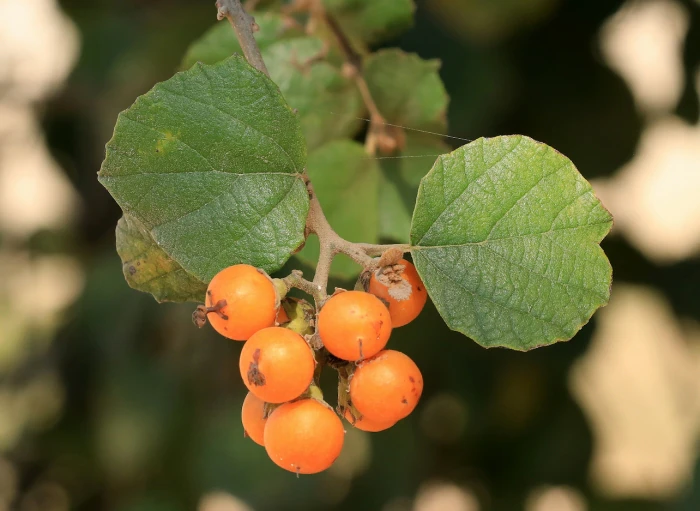Sandpaper Saucer-Berry
(Cordia monoica)
Sandpaper Saucer-Berry (Cordia monoica)
/
/

Wynand Uys
CC BY 4.0
Image By:
Wynand Uys
Recorded By:
Copyright:
CC BY 4.0
Copyright Notice:
Photo by: Wynand Uys | License Type: CC BY 4.0 | License URL: http://creativecommons.org/licenses/by/4.0/ | Rights Holder: Wynand Uys | Publisher: iNaturalist | Date Created: 2023-06-09T11:26:12-07:00 |





















Estimated Native Range
Climate Requirements for San Carlos, California
| This Plant | Your Site | Plant Suitability for Your Location | ||
|---|---|---|---|---|
| • Precipitation | 2" - 77" | 20" | Your precipitation may be insufficient for this plant. Irrigate N" / year. | Irrigate N" / year |
| • High Temp. | 76°F - 108°F | 77°F | Your summer temperatures are normal for this plant. | Excellent |
| • Low Temp. | 37°F - 74°F | 40°F | Your winter temperatures are normal for this plant | Excellent |
This plant should grow well at your location with about N inches per year (Y minutes per month) of irrigation.
Summary
Cordia monoica, commonly known as Sandpaper Saucer-Berry or Snot Berry, is a deciduous shrub or small tree native to a variety of habitats including dry savannas, woodlands, and scrub areas across India, Sri Lanka, and African countries from Sudan to South Africa. It typically grows to a height of 6-15 feet (2-5 meters) and a similar width, with a dense, rounded crown. The leaves are rough-textured, resembling sandpaper, which is reflected in one of its common names. The plant produces small, inconspicuous white flowers that are followed by distinctive saucer-shaped fruits that are edible and have a mucilaginous texture, hence the name "Snot Berry".
The Sandpaper Saucer-Berry is valued for its hardiness and adaptability to various soil types, including those with poor fertility. It is drought-tolerant once established, making it suitable for xeriscaping and as a windbreak in arid regions. The fruits are sometimes used in traditional medicine and local cuisines. In cultivation, it requires full sun to part shade and can tolerate a range of soil conditions, but it prefers well-drained soils. There are no major disease or pest problems associated with this plant, although it may require pruning to maintain a desirable shape.CC BY-SA 4.0
The Sandpaper Saucer-Berry is valued for its hardiness and adaptability to various soil types, including those with poor fertility. It is drought-tolerant once established, making it suitable for xeriscaping and as a windbreak in arid regions. The fruits are sometimes used in traditional medicine and local cuisines. In cultivation, it requires full sun to part shade and can tolerate a range of soil conditions, but it prefers well-drained soils. There are no major disease or pest problems associated with this plant, although it may require pruning to maintain a desirable shape.CC BY-SA 4.0
Plant Description
- Plant Type: Shrub, Tree
- Height: 15-25 feet
- Width: 10-15 feet
- Growth Rate: Moderate
- Flower Color: N/A
- Flowering Season: Spring
- Leaf Retention: Deciduous
Growth Requirements
- Sun: Full Sun, Part Shade
- Water: Low
- Drainage: Medium, Fast
Common Uses
Border Plant, Drought Tolerant, Low Maintenance
Natural Habitat
Native to dry savannas, woodlands, and scrub areas across India, Sri Lanka, and African countries from Sudan to South Africa
Other Names
Common Names: Sand Cordia, Snot Berry, Monoica Cordia
Scientific Names: Cordia monoica, Cordia bequaertii, Cordia kabarensis, Cordia rubra, Gerascanthus trichotoma f. puberula, Gerascanthus trichotoma f. tomentosa
GBIF Accepted Name: Cordia monoica